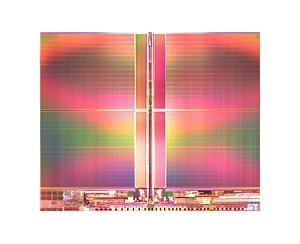SSDs using Intel flash memory are already considered among the best in the industry, but they'll soon be getting a little bit better.
In a joint announcement with Micron Technology, the company revealed that it has sampled 3-bit-per-cell 25nm flash chips that will be ready for full-scale production by the end of the year.
Intel is declaring that the 64Gb (8GB) device is the smallest and highest-capacity chip currently available. However, some of you may remember Hynix started mass-producing smaller, 20nm chips just a few weeks ago. So how can Intel claim to have the capacity-crown?

Flash memory comes in single-level cell (SLC) or, more commonly, multi-level cell (MLC) varieties. This means that there are one or two bits-per-cell. Intel's new memory uses three-bits for triple-level cells (TLC), allowing for higher-density storage. In fact, the announcement suggests that the TLC chips are 20 per cent smaller than the company's existing 25nm memory.
The design is the result of the IM Flash Technologies (IMFT) joint venture that has seen Intel and Micron working together on the new development.
According to Intel VP Tom Rampone, the company "plans to use the design and manufacturing leadership of IMFT to deliver higher-density, cost-competitive products to our customers based on the new 8GB TLC 25nm NAND device".
With any luck, this new design will be the next major step forward in decreasing the cost-per-gigabyte of NAND memory. Smaller, higher-density chips will cost less to produce, meaning that we should start seeing cheaper, higher-capacity flash storage by the start of next year.













